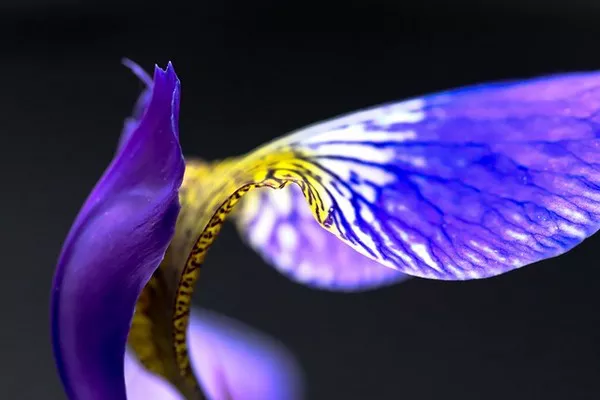Dragonflies, with their vibrant colors and graceful flight, are some of the most fascinating and beneficial insects in the natural world. Not only are they a joy to observe, but they also play a crucial role in maintaining ecological balance by controlling insect populations, including mosquitoes. To attract these magnificent creatures to your garden or outdoor space, it’s essential to understand the types of flowers that can lure them in. In this article, we will explore the world of dragonflies and the flowers that best capture their attention.
The Dragonfly’s World
Before diving into the flowers that attract dragonflies, it’s essential to gain a deeper understanding of these remarkable insects. Dragonflies belong to the order Odonata, which also includes damselflies. They have been around for hundreds of millions of years, making them some of the oldest insects on Earth. Dragonflies are agile predators that spend most of their lives near freshwater habitats, such as ponds, lakes, streams, and rivers. These habitats are essential for dragonfly reproduction, as their larvae, known as nymphs, develop in aquatic environments.
Dragonflies have a few key characteristics that make them unique and captivating:
Vibrant Colors: One of the most striking features of dragonflies is their dazzling colors. They come in a wide range of shades, from iridescent blues and greens to fiery reds and oranges. These colors are not just for show; they serve as a form of communication, helping dragonflies identify mates and rivals.
Incredible Flight: Dragonflies are exceptional flyers, capable of swift and agile movements in all directions. Their flying prowess allows them to catch prey with ease, making them efficient hunters of flying insects.
Predatory Nature: Adult dragonflies are carnivorous and primarily feed on flying insects, including mosquitoes, flies, and gnats. This makes them valuable allies in controlling pest populations in your garden or around your home.
Short Lifespan: Despite their remarkable abilities, dragonflies have a relatively short adult lifespan, typically ranging from a few weeks to a few months, depending on the species. During this time, they focus on mating and laying eggs to continue their life cycle.
With their brief yet captivating presence, dragonflies make a welcome addition to any garden. To attract them, you can create a dragonfly-friendly environment by incorporating the right types of flowers into your landscaping.
Dragonfly-Friendly Flowers
The key to attracting dragonflies to your garden lies in providing a diverse range of flowers that meet their specific needs. Dragonflies are primarily drawn to flowers that offer suitable landing pads, nectar for sustenance, and a hospitable environment for their prey. Here are some flower types that can help you create a dragonfly haven:
Water Irises (Iris spp.): Water irises are an excellent choice for gardens near ponds or water features. Their striking blooms and long, slender leaves provide ideal landing spots for dragonflies. The proximity to water also ensures a steady supply of prey for these aerial hunters.
Coneflowers (Echinacea spp.): Coneflowers, with their daisy-like blooms and sturdy stems, are a favorite of many dragonfly species. They offer ample nectar and a convenient perch for dragonflies to rest and hunt from. The vibrant colors of coneflowers are particularly attractive to these insects.
Joe-Pye Weed (Eutrochium spp.): This tall, robust perennial is a magnet for dragonflies. Its pink or purple flower clusters provide an abundant source of nectar, and its height makes it an excellent vantage point for dragonflies to spot prey.
Swamp Milkweed (Asclepias incarnata): Dragonflies love milkweed for its sweet nectar and the presence of other insects it attracts. Swamp milkweed, in particular, thrives in moist soil conditions, making it a perfect choice for areas near water.
Pickerelweed (Pontederia cordata): Often found in wetland areas, pickerelweed boasts spikes of violet-blue flowers that dragonflies find irresistible. Planting it along the edges of ponds or streams can help create an attractive habitat for these insects.
Blue Flag Iris (Iris versicolor): Another iris variety, the blue flag iris, is an excellent choice for attracting dragonflies. Its striking blue-purple flowers are a visual treat, and its sturdy stems provide a stable perch for dragonflies.
Liatris (Liatris spp.): Liatris, also known as blazing star or gayfeather, offers tall spiky blooms that dragonflies find appealing. These flowers are rich in nectar and can serve as a valuable food source for these insects.
Sweetscent (Pluchea odorata): This aromatic plant produces clusters of small pink or lavender flowers. Dragonflies are drawn to the nectar, and the plant’s bushy growth provides shelter for other beneficial insects as well.
Creating the Ideal Dragonfly Habitat
To maximize your garden’s appeal to dragonflies, consider the following tips:
Provide Water Sources: Since dragonflies lay their eggs in or near water, having a pond, water garden, or even a birdbath can encourage them to visit and breed in your garden.
Avoid Pesticides: Pesticides can harm not only the pests but also the beneficial insects like dragonflies. Opt for natural pest control methods to maintain a balanced ecosystem.
Create Shelter: Besides flowers, dragonflies appreciate sheltered areas to rest and hide from predators. Incorporate rocks, tall grasses, and shrubs into your garden to provide these hiding spots.
Maintain Native Plants: Native plants are well-suited to your local environment and are more likely to attract native dragonfly species. Research which plants are native to your region and incorporate them into your garden.
Conclusion
Dragonflies are not only stunning and captivating insects, but they also serve as valuable allies in natural pest control. By planting the right flowers and creating a dragonfly-friendly environment, you can attract these beneficial insects to your garden, helping to maintain a healthy and balanced ecosystem. As you watch these graceful creatures flit and hover among your flowers, you’ll gain a deeper appreciation for the intricate web of life in your own backyard.


